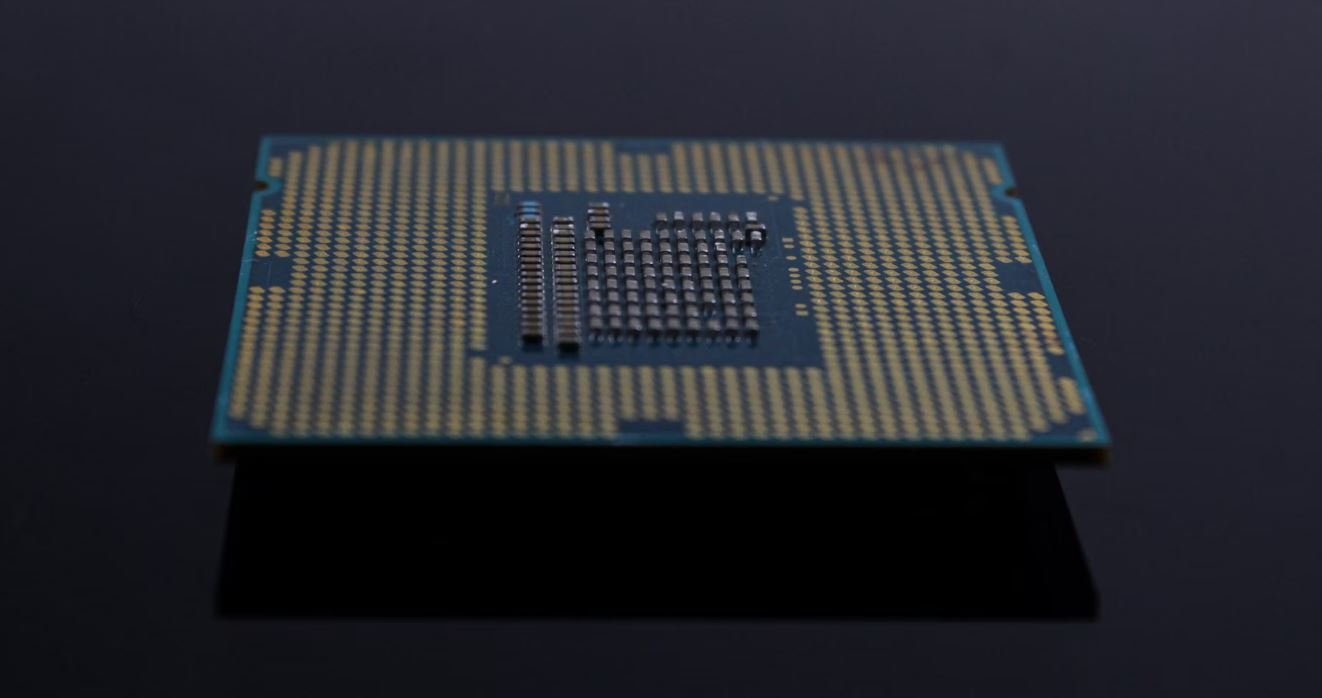AI Software Development Process
Artificial Intelligence (AI) software development is a complex process that involves several steps and considerations. With the rise in AI use cases across industries, understanding the development process is crucial for businesses exploring AI solutions. In this article, we will delve into the key steps involved in AI software development and explore how organizations can effectively navigate the process.
Key Takeaways
- AI software development is a multi-step process with specific considerations at each stage.
- It involves steps like understanding the requirements, data collection and preparation, algorithm development, model training, and deployment.
- Collaboration between software engineers, data scientists, and domain experts is crucial for successful AI development.
Understanding the Requirements:
The initial step in AI software development is to define the problem at hand and understand the desired outcome.
Accurately defining the problem helps in developing an AI solution that fulfills business objectives.
Establishing clear requirements sets the foundation for the subsequent stages of the development process.
Data Collection and Preparation:
One of the most critical aspects of AI software development is the availability of quality data.
High-quality and representative datasets are essential for training AI models that can make accurate predictions.
Collecting relevant data and preprocessing it to remove noise or biases ensures the effectiveness of the developed AI models.
| Step | Description |
|---|---|
| 1 | Data Collection |
| 2 | Data Cleaning |
| 3 | Feature Extraction |
| 4 | Normalization |
Algorithm Development:
Once the data is collected and prepared, the next step is to develop algorithms that can process the data and extract meaningful insights.
Choosing the right algorithms, such as machine learning or deep learning techniques, depends on the nature of the problem and available data.
Iterative experimentation and algorithm tuning are often required to optimize performance and accuracy.
Model Training:
Training AI models involves feeding them with labeled or historical data to learn patterns and make predictions.
Data scientists use various techniques like supervised or unsupervised learning to train AI models.
The training process involves adjusting model parameters through multiple iterations until satisfactory performance is achieved.
| Supervised Learning | Unsupervised Learning |
|---|---|
| Requires labeled data | Learns patterns from unlabeled data |
| Applicable in classification or regression problems | Used for clustering or dimensionality reduction tasks |
| Examples: Image classification, sentiment analysis | Examples: Customer segmentation, anomaly detection |
Deployment:
Once the AI models are trained and evaluated, they need to be deployed into a production environment where they can be effectively utilized.
Considerations like scalability, maintainability, and security play a significant role in the development of a deployment strategy.
Continuous monitoring and updates enhance the performance and improve the models over time.
Seeking Expertise to Navigate the AI Development Process
AI software development is a specialized field that requires a combination of skills from software engineers, data scientists, and domain experts.
Collaboration between these professionals is crucial for successful AI development, as it ensures a holistic approach to problem-solving.
By leveraging the expertise of individuals with diverse skill sets, organizations can navigate the AI development process with confidence and achieve transformative results.
Conclusion
AI software development is a complex process involving multiple stages and considerations.
From understanding the requirements to training and deploying AI models, each step requires careful planning and expertise.
Collaboration between software engineers, data scientists, and domain experts enables organizations to develop AI solutions that provide accurate predictions and meaningful insights.
By following the key steps outlined in this article, businesses can effectively navigate the AI software development process and harness the power of AI for their growth and innovation.

Common Misconceptions
Misconception 1: AI Software Development is entirely autonomous
One common misconception people have about AI software development is that it is solely conducted by autonomous systems without any human involvement. In reality, while AI technology is designed to mimic human intelligence, its development process heavily relies on human programmers and engineers who create the algorithms and train the models.
- AI development involves human expertise and decision-making.
- Programmers play a crucial role in designing and implementing AI systems.
- Human oversight is necessary to ensure the accuracy and ethical usage of AI technology.
Misconception 2: AI development is limited to complex tasks
Another common misconception is that AI software development is only applicable to highly complex tasks or domains such as robotics or self-driving cars. However, AI technology can be utilized for a wide range of applications in various industries, including customer service, healthcare, finance, and marketing.
- AI can be used for automating repetitive tasks that require a significant amount of time and human effort.
- AI technology can assist in decision-making processes, even in relatively simpler scenarios.
- AI can enhance efficiency and productivity across different sectors.
Misconception 3: AI development process is quick and effortless
Many people have the misconception that developing AI software is a quick and effortless process. However, like any software development, building AI systems requires careful planning, data collection, algorithm design, training, debugging, and continuous refinement.
- AI development involves multiple iterative processes and testing.
- Collecting and preparing high-quality data is a time-consuming task.
- AI models need to be continuously monitored and updated to maintain performance and accuracy.
Misconception 4: AI software development only requires coding abilities
Some people mistakenly believe that AI software development primarily relies on coding skills. While coding is undoubtedly an essential part of the process, AI development also requires deep understanding of mathematics, statistics, machine learning algorithms, and data analysis techniques.
- Mathematical principles, such as linear algebra and calculus, are fundamental to AI development.
- Understanding machine learning algorithms is crucial for training AI models.
- Data analysis skills are necessary to interpret and validate AI model outputs.
Misconception 5: AI software development will replace human jobs completely
There is a widespread misconception that AI software development will lead to the complete replacement of human jobs. While AI has the potential to automate certain tasks and improve efficiency, it is unlikely to replace human intelligence and creativity in most job roles.
- AI technology is better suited to augment human capabilities rather than replace them.
- AI systems still require human oversight and decision-making in many critical areas.
- New job opportunities can emerge as a result of AI advancements.

Introduction
In the world of artificial intelligence, the software development process plays a crucial role in creating efficient and intelligent systems. This article delves into various aspects of AI software development, examining different stages, techniques, and practices. Through a series of captivating tables, we explore the key elements that drive the development process forward and shed light on the fascinating world of AI.
Table: Key Stages of AI Software Development
Understanding the fundamental stages of AI software development is vital to ensure a well-structured and successful project. This table illustrates the various stages involved, from initial planning to deployment and maintenance.
| Stage | Description |
|---|---|
| Data Collection | Gathering high-quality and relevant data to train AI models. |
| Data Preprocessing | Cleaning, transforming, and normalizing data for effective analysis. |
| Model Design | Creating the architecture and specifications for AI models. |
| Model Training | Training the AI models using collected and preprocessed data. |
| Model Testing | Evaluating the performance and accuracy of trained models. |
| Model Optimization | Tuning and refining the models to enhance performance. |
| Deployment | Transferring the trained models into production environments. |
| Maintenance | Regularly updating and monitoring deployed AI systems. |
Table: Popular AI Development Techniques
AI software development employs a wide range of techniques to facilitate the creation of intelligent systems. This table highlights some of the most commonly used techniques and their applications in various domains.
| Technique | Application |
|---|---|
| Supervised Learning | Classifying images, sentiment analysis, speech recognition. |
| Unsupervised Learning | Clustering, anomaly detection, market segmentation. |
| Reinforcement Learning | Game playing, robotics control, resource optimization. |
| Neural Networks | Image recognition, natural language processing. |
| Genetic Algorithms | Optimization problems, feature selection. |
| Expert Systems | Medical diagnosis, credit scoring, fraud detection. |
Table: AI Software Development Best Practices
Adhering to best practices in AI software development enhances the chances of creating robust and reliable systems. This table presents a set of recommended practices to follow during different stages of AI development.
| Stage | Best Practices |
|---|---|
| Data Collection | Ensure data variety, relevance, and proper documentation. |
| Data Preprocessing | Handle missing data, normalize features, and ensure statistical independence. |
| Model Design | Use appropriate model architectures for the problem. |
| Model Training | Perform cross-validation, monitor convergence, and avoid overfitting. |
| Model Testing | Design comprehensive test cases and assess model performance metrics. |
| Model Optimization | Hyperparameter tuning, regularization, and ensemble methods. |
| Deployment | Develop scalable and platform-agnostic deployment strategies. |
| Maintenance | Monitor for data drift, adapt to evolving scenarios, and update models as needed. |
Table: Challenges in AI Software Development
The rapid advancement of AI software development also brings its fair share of challenges. This table highlights some common obstacles faced during the development process.
| Challenge | Description |
|---|---|
| Data Quality | Insufficient or biased data that affects model performance. |
| Algorithm Selection | Choosing the most suitable algorithm for the problem at hand. |
| Computational Resources | Requirements for high computational power and memory. |
| Interpretability | Lack of transparency in understanding how AI systems make decisions. |
| Ethical Considerations | Addressing biases, privacy concerns, and avoiding discriminatory results. |
| Integration Complexity | Integrating AI systems into existing frameworks or software. |
Table: Industries Benefiting from AI Software Development
AI software development has revolutionized various industries, introducing innovative solutions and improved efficiencies. This table showcases a selection of industries where AI has made a significant impact.
| Industry | AI Applications |
|---|---|
| Healthcare | Disease diagnosis, drug discovery, patient monitoring. |
| Finance | Stock market analysis, risk assessment, fraud detection. |
| Transportation | Autonomous vehicles, route optimization, traffic management. |
| Retail | Customer segmentation, demand forecasting, personalized recommendations. |
| Manufacturing | Quality control, predictive maintenance, supply chain optimization. |
| Education | Personalized learning, intelligent tutoring systems. |
Table: Programming Languages in AI Development
AI software development encompasses various programming languages, each with its strengths and applications. This table presents a selection of popular programming languages in the field of AI.
| Programming Language | Applications |
|---|---|
| Python | Data analysis, machine learning, natural language processing. |
| R | Statistical analysis, data visualization, predictive modeling. |
| Java | Enterprise AI applications, large-scale data processing. |
| Julia | High-performance numerical computing, parallel processing. |
| Scala | Distributed computing, scalable data processing. |
| C++ | Performance-critical applications, robotics, computer vision. |
Table: AI Platforms and Frameworks
AI software development leverages various platforms and frameworks to facilitate rapid and efficient development. This table highlights a selection of widely used platforms and frameworks in the AI community.
| Platform/Framework | Features |
|---|---|
| TensorFlow | Deep learning, model deployment, production-ready. |
| PyTorch | Dynamic computation graphs, research-friendly, natural language processing. |
| Keras | Simplified interface, easy prototyping, neural networks. |
| Scikit-Learn | General-purpose machine learning, data preprocessing, model evaluation. |
| Theano | Numerical computation, deep learning, symbolic graph calculations. |
| Caffe | Convolutional neural networks, image processing, model zoo. |
Conclusion
In conclusion, AI software development is a complex and multi-faceted process that involves understanding the stages, techniques, and best practices to create intelligent systems. The tables presented in this article offer a glimpse into the world of AI development, showcasing the diverse range of applications, challenges, and tools involved. As AI continues to evolve, mastering the intricacies of the development process becomes paramount in harnessing the full potential of this groundbreaking technology.
Frequently Asked Questions
AI Software Development Process
- What is AI software development?
- AI software development refers to the process of creating computer programs and systems that can perform tasks that normally require human intelligence, such as speech recognition, visual perception, and decision-making. It involves designing, developing, and deploying artificial intelligence algorithms and models to solve specific problems.
- What are the main steps in the AI software development process?
- The main steps in the AI software development process typically include problem identification and understanding, data collection and preprocessing, algorithm selection and implementation, model training and evaluation, and deployment and optimization.
- How do AI developers identify and understand the problem to be solved?
- AI developers use various methods to identify and understand the problem, such as conducting interviews with stakeholders, analyzing existing data and workflows, and researching relevant literature. This helps in defining clear objectives and requirements for the AI system.
- What is data collection and preprocessing in AI software development?
- Data collection involves gathering relevant data that will be used to train the AI model. Preprocessing refers to the cleaning, transforming, and organizing of the data to make it suitable for analysis. This step is crucial as the quality of the data greatly impacts the performance of the AI system.
- How do developers select and implement algorithms in AI software development?
- AI developers select and implement algorithms based on the problem at hand and the available data. They consider factors such as the complexity of the problem, the type of data, and the desired outcomes. Common algorithms used in AI development include machine learning algorithms, deep learning models, and natural language processing techniques.
- What is model training and evaluation in AI software development?
- Model training involves using the collected and preprocessed data to train the AI model. This involves feeding the data into the algorithm or model and adjusting its parameters to minimize errors and improve performance. Model evaluation is done by measuring the model’s accuracy, precision, recall, and other relevant metrics to ensure it meets the desired standards.
- How is the AI system deployed and optimized?
- After successful model training and evaluation, the AI system is deployed for real-world use. This involves integrating it into existing software infrastructure and ensuring it functions properly. Optimization is an ongoing process where developers continuously monitor and improve the system’s performance, fine-tuning parameters, and updating the model as needed.
- What are the common challenges in AI software development?
- Common challenges in AI software development include obtaining high-quality and representative data, selecting appropriate algorithms for the problem, dealing with bias and ethical considerations, managing computational resources, and ensuring the security and privacy of user data.
- What programming languages are commonly used in AI software development?
- Common programming languages used in AI software development include Python, Java, C++, and R. Python is particularly popular due to its extensive libraries and frameworks for machine learning and data analysis.
- What are some real-world applications of AI software development?
- AI software development finds applications in various fields, including healthcare (diagnosis and treatment planning), finance (fraud detection), transportation (autonomous vehicles), customer service (chatbots), and manufacturing (quality control and automation). The potential applications of AI are vast and continue to grow.





